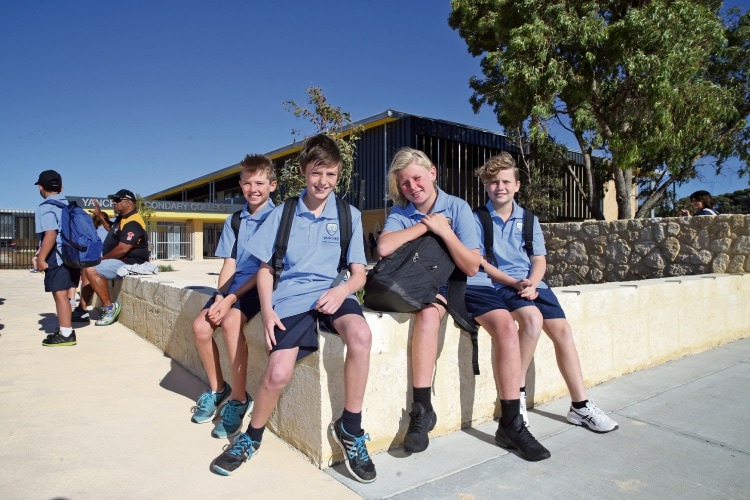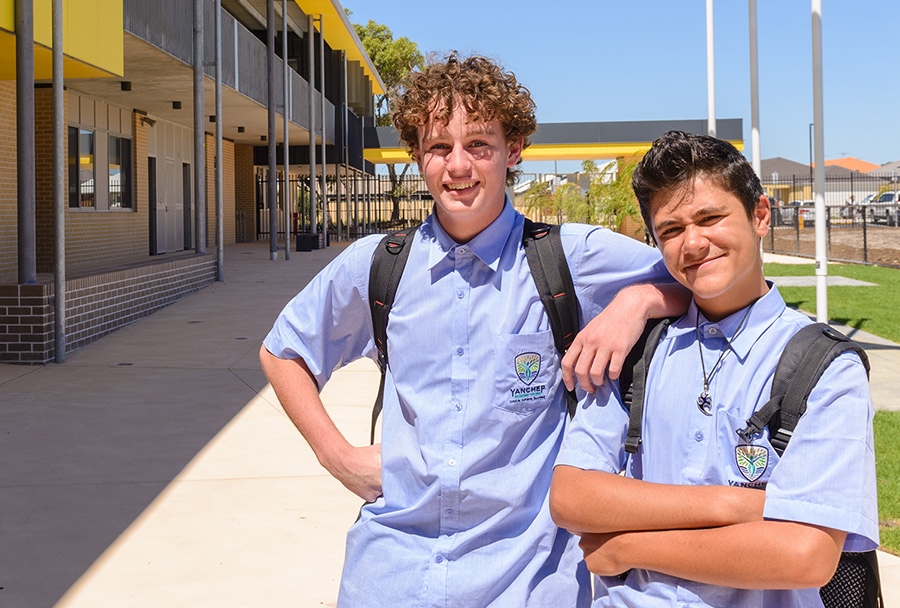Yanchep Secondary College is a BYOD (Bring Your Own Device) school. Although Yanchep Secondary College does not specify the necessity for all students to bring their own device to school, it is strongly advised in today’s digital era that they do so, in order to enhance their learning in class.
We highly recommend that students bring a laptop. When considering the purchase of a student laptop, those with specifications given below will be able to join our Wi-Fi, access connect, eBooks and can utilise the Office 365 software that is available to all students.
- Device OS: Windows operating systems
- Up-to-date security software;
- Wireless: dual-band (2.5GHz/5GHz)
- Light and portable (screen size between 9″ and 14” screen)
- Min storage capacity: 128GB
- RAM: Minimum 4GB
- A physically connected full keyboard
- Minimum battery life: Six hours

In addition to the above specification, it is preferable to obtain a stylus/pen enabled laptop as having a stylus will allow students to annotate and highlight electronic documents, take notes digitally, create diagrams, illustrations and art work. It is also advisable to consider an optional warranty and case to provide additional security in case of drops or spills.
Yanchep Secondary College is working in partnership with JB Hi-Fi Education Solutions to offer parents the opportunity to purchase the recommended BYOD 1:1 device for school at a discounted price. These bundles are not available in a JB Hi-Fi retail store so you must use the portal to process an order. The link for the portal is https://www.jbeducation.com.au/byod.
All school text books are now digital and available as eBooks, for students to download and access direct from their device. This also facilitates real time updates of any text books at no additional cost. Furthermore, the use of devices motivates students to practice self-access learning alongside independent learning and is both an interactive and engaging classroom learning tool.
Students are encouraged to see the use of technology as a fluid process, where appropriate technology is used when it is the best or most efficient way to deal with the situation at hand.
Students are exposed to a range of technologies in order for them to develop confident use and an ability to assess whether to use technology or which technology to use in any given situation.
Students are supported in developing their skills in the use of various software applications such as Microsoft Word, Excel, PowerPoint and email.
Students are able to develop skills in writing code and programming which enables them to create through the use of technology. This can extend to 3D printing, creating games, media and even robotics and model cars.
Teachers incorporate teaching technologies that enhance the teaching and learning process and effectively engage the students in class.
Our computers are installed with filtering software to ensure that we are providing the best possible cyber safety for your child. No filter is 100% effective and it is essential that you, the parent, actively supervise the use of your child’s laptop. It is recommended that laptops are not taken into bedrooms and the use of them should be monitored regularly by parents and staff at the school. Limit the time spent on these devices and show interest in what your child is doing. The same can be said for other technologies you may have at home such as iPads and phones. These are an amazing tool, but can also bring with them their own set of dangers. Be aware of the apps your child is using and guide them wisely in their use.
We look forward to working with you and moulding another responsible digital citizen.

Hints and tips to help home discussions:
- Chat regularly with your family about technology and how each of you are using it. Be interested in each other’s online adventures.
- Stay safe and well supported online by using technology in shared spaces in your house.
- Share websites of interest with your family and spend time visiting these sites so that you have some knowledge of each other’s online travels.
- As a family, agree upon your family’s acceptable and safe use of technology. Each family member needs to have input into the agreement and all technologies should be discussed.
- Travelling around online is a little like travelling around offline. You need to think about your online safety. Your loved ones will want to know where you have been and for how long.
- Sometimes it is hard to talk to each other about our concerns or problems—online or offline. If one of your friends or family members is behaving differently talk with them about it.
- Friends are great to have and we all enjoy spending time with them… but people can pretend to be whomever they want online so it is best to only have online friends who you also know offline.
- Change passwords regularly! Never share your password with anyone. Do not save passwords in browsers or programs.
- It is your responsibility to monitor and manage your digital reputation. Regularly search your name online. Put your name in ‘inverted commas’ for a more specific search.
- Treat others how you would like them to treat you, both online and offline.
- If you are saying or doing things online or offline you know are not right…. ask for help. Have a friend or adult help you find better ways to express how you are feeling.
- What you put online stays there FOREVER so think carefully before you post.
